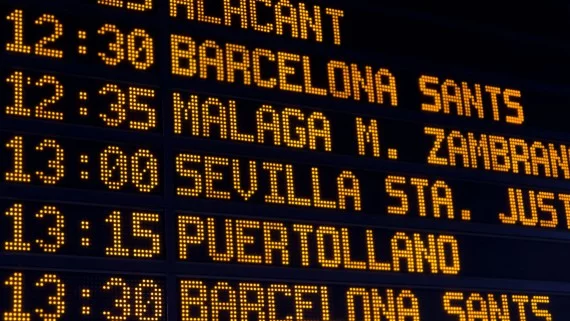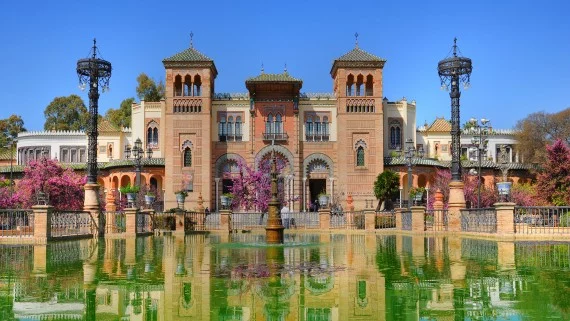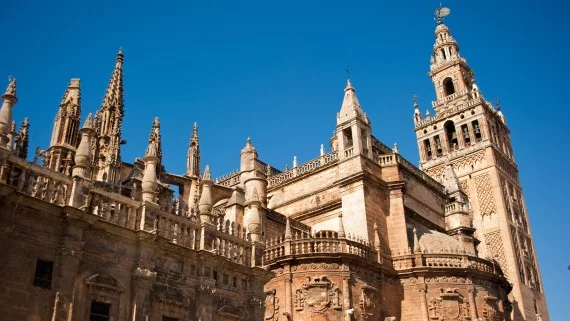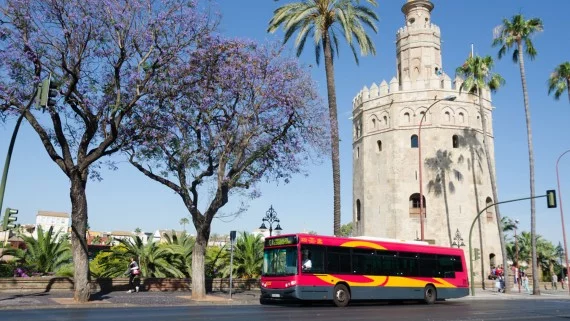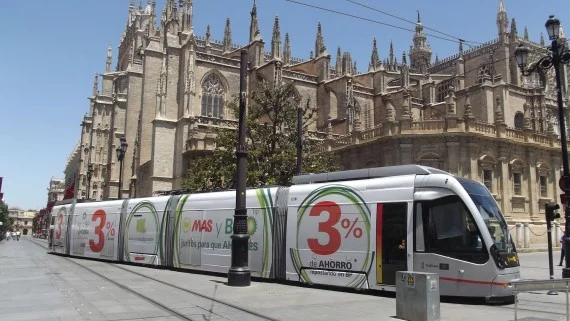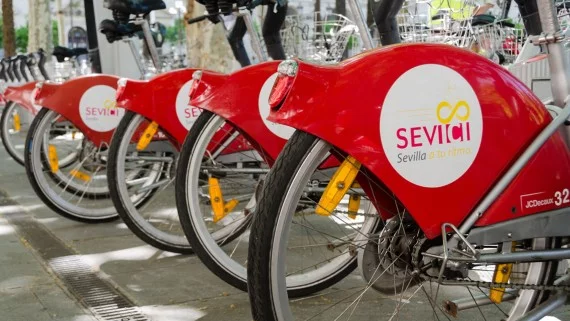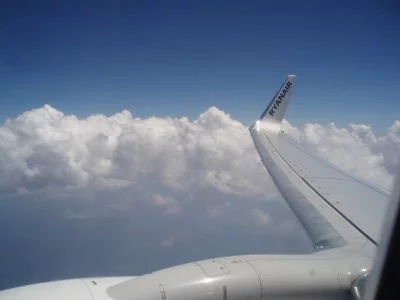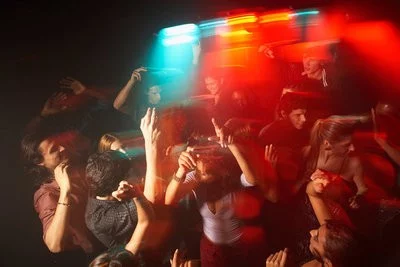Seville, capital of the Andalusian community, is one of the five most populated cities in Spain. With its almost 700.000 inhabitants, the old town of Seville is the largest in Spain and one of the most representative symbols of tourism in Spain. In this guide you can find useful information if your next destination is the capital of Seville.
Below you have an index with all the points that we are going to deal with in this article.
Article Index
- 1.
- 1.1.
- 1.2.
- 1.3.
- 2.
- 3.
- 4.
- 4.1.
- 4.2.
- 4.3.
- 4.4.
- 4.5.
- 4.6.
- 4.7.
- 4.8.
- 4.9.
- 4.10.
- 5.
- 5.1.
- 5.2.
- 5.3.
- 5.4.
- 5.5.
- 6.
- 7.
- 8.
- 8.1.
- 8.2.
- 9.
How to get
El how to get to Seville it will depend on what our point of origin is. If we travel from another Spanish community, we can choose between traveling by a government-protected, land o Mar, while if you are traveling from a European destination, the best option is always travel by airplane and more today with the wide range of low cost flights existing in Europe. In the following sections we show you the different possibilities that exist to travel to Seville.
By air
Seville has its own international airport, the Seville-San Pablo Airport (IATA code: SVQ), which is located 10 km northwest of the city center and is located between the municipalities of Seville and La Rinconada.
A large majority of airlines both flights as with conventional flights they have Seville as their destination. Among them, stand out Air Berlin, Air Europe, Air France, British Airways, the easy family of brands., Iberia Express, Lufthansa, Ryanair, Vueling and TAP Portugal, among others.
To consult a list with the most important airlines of the world, you can consult our article List of airlines.
By land
Choosing to travel by land is a good option, especially if you are traveling from another point in Spain or from Portugal. The city has the Seville-Santa Justa Station, located in the capital Seville, which is served by the high-speed train or AVE.
For example, if you are traveling from Madrid, the capital of Spain and where there are more connections, the duration of the trip is about two hours. Trains to Seville leave from other Andalusian provinces (eg Córdoba) and other Spanish communities such as Extremadura or Castilla-La Mancha practically daily.
Another option highly regarded by both Spanish and Portuguese tourists is to travel by car. The advantage of opting for this means of transport is that Seville has an excellent network of roads and highways connected with the rest of the capitals of Andalusia, Spain and Portugal.
On the other hand, you can also travel in coach with some of the most popular companies in Spain and Europe, such as Alsa, Eurolines, Unionbus, Condama or Socibús, among others.
By sea
El port of Seville It stands out for being the only fluvial port in Spain, since it is located on the Guadalquivir river, navigable from its mouth in Sanlúcar de Barrameda to Seville. It is located approximately 80 km from the Atlantic Ocean.
Although this is not the most common means of transport to travel to the city, there are a good number of tourist cruises that travel the Guadalquivir river to the port of Seville, the latter considered first class.
Addresses and telephone numbers of interest
Below we list the most useful addresses and telephone numbers of interest for any tourist traveling to Seville:
- Seville Tourist Office: managed by Andalucía.ORG, it is located at Av. de la Constitución, 21, 41004 Sevilla and the contact telephone number is +34 954 78 75 78. If you want to visit the official website, we recommend clicking on this link.
- Seville Tourism Consortium: here they will be able to offer you all kinds of information about the city, whether in terms of accommodation, gastronomy, what to see, shopping, guided tours, etc. The address is Plaza de San Francisco, 19. Edif. Laredo. 41004 Sevilla and the contact telephone number is +34 955 471 232. To visit their website, we recommend you click on this link.
- Tourist bus: it is a very comfortable and pleasant way to see the city in full. There are several types of tickets, such as the 48-hour ticket, whose price for young people amounts to € 7,00 and, for adults, to € 16,00. These and other options can be found on their website, which you can access by clicking on this link. The office is located in Paseo de Colón, nº 18, Bajo right 41001 Seville and the contact telephone number is +34 954 56 06 93.
Maps
As we mentioned previously, the municipal term of Seville is located in the homonymous province and belongs to the Autonomous Community of Andalusia, located in the south of the Iberian Peninsula.
The entire city is located on the left bank of the Guadalquivir river except for the Los Remedios and Triana neighborhoods, which are located on the right side. This makes Seville a river port. Likewise, in the surroundings of the city there are areas of countryside, marsh lands and the Aljarafe area, formed by two elevated areas. In total, the Sevillian municipal term has a land area of 140,8 km².
Seville is divided into a total of 11 districts, each with its corresponding neighborhoods. Thus, the following are the districts into which the city is divided: Bellavista-La Palmera, Casco Antiguo, Cerro-Amate, Este-Alcosa-Torreblanca, Los Remedios, Macarena, Nervión, Norte, San Pablo, Santa Justa, Sur and Triana.
What to see and do
Seville is a city full of monuments, restaurants and, ultimately, tourist attractions, so traveling to this city requires organization depending on the length of your stay. However, the capital of Seville has 10 totally essential places that cannot be missing from your list of things to see and do in the city. Here we show you which are the tourist attractions and the Seville monuments which you can not miss.
Royal Alcazares of Seville
The Reales Alcázares of Seville constitute a group of palaces surrounded by a wall that began to be built in the High Middle Ages. Its architectural style is characterized by being the result of a mixture of Islamic, Mudejar and Gothic styles. Furthermore, in the successive reforms that have been carried out, both Baroque and Renaissance elements have been included. It was declared a World Heritage Site by UNESCO in 1987.
Maria Luisa Park
The María Luisa Park, also known as Park of the pigeons, is the most important public garden in Seville and one of its green lungs. Opened in April 1914, it was recently declared A Cultural under the official name Infanta María Luisa Fernanda Urban Park. Within the same park there are two other squares: the Plaza de España and the Plaza de América, the latter on the occasion of the Ibero-American Exposition of Seville, created in 1929.
tower of Gold
La tower of Gold It is another of the tourist attractions of Seville that cannot be missed on any trip to the city worth its salt. Located next to the Real Maestranza bullring, it is a albarrana tower, that is, a tower that was part of a fortified enclosure in the past. It is located on the left bank of the Guadalquivir river. Since 2005, when a series of restoration works took place on the tower, it is known that the tower has the brilliance that characterizes it because its tile cladding has a mixture of lime mortar and pressed straw.
Archivo de Indias
El General Archive of the Indies of Seville constitutes, together with the Cathedral and the Alcazar, another of the main buildings of Seville. Its construction took place in 1785 by order of King Carlos III with the aim of centralizing in this place all the documentation on the administration of Spanish colonies that was scattered in the Spanish archives of Cádiz, Seville and Simancas (Valladolid). Declared Heritage by UNESCO in 1987, the building was originally the Casa Lonja de Mercaderes de Sevilla, built between 1584 and 1598.
The Giralda
La Giralda is the bell tower of the Cathedral of Sevilla. Included in the UNESCO World Heritage list, its construction took place in two different periods: on the one hand, the lower two thirds correspond to the minaret of the city's XNUMXth century mosque, on the other, the upper third is a superimposed construction dating from the Christian era. On the cusp of La Giralda is the famous Giraldillo, which is the largest bronze sculpture of the European Renaissance. At 104,1 m high, it is one of the tallest towers in Europe, above Big Ben in London (96,3 m) and the Tower of Pisa in Italy (55,8 m).
Plaza of Spain
La Plaza de España in Seville It is a place framed in the Parque de María Luisa of which we have spoken previously. It is an architectural complex that forms one of the most spectacular examples of the legacy of regionalist architecture. It is the main building of the Ibero-American Exhibition of Seville from 1929. It stands out because the busts of illustrious figures in Spanish history appear on the walls and on the benches all the provinces of Spain are represented in tiles.
Cathedral of Santa Maria de la Sede
La Cathedral of Santa Maria de la Sede, better known simply as Cathedral of Sevilla, It is the Gothic-style cathedral with the largest surface area on the planet, hence UNESCO declared it a World Heritage Site in 1987 and Asset of Outstanding Universal Value in 2010. Its construction dates back to 1401. The Cathedral temple contains the mortal remains of figures as relevant to universal history as Christopher Columbus and various kings of Castile such as Fernando III El Santo or Alfonso X El Sabio, among others.
Lebrija
Lebrija is a Sevillian municipality of almost 30.000 inhabitants and almost 400 km² of land area, the hometown of Antonio de Nebrija, author of the first Spanish grammar, and the navigator Juan Diaz de Solís, discoverer of the Río de la Plata (Southern Cone of America). Lebrija is nestled in the Guadalquivir Marshes and is surrounded by municipalities such as Jerez de la Frontera, Arcos de la Frontera and Trebujena. It has a series of monuments that are really worth visiting, such as the Palace of the Countess of Lebrija, the Church of Santa María de la Oliva, the Ruins of the Castle and Chapel of Santa María del Castillo and the Statue of Elio Antonio, among others.
Santiponce
Santiponce is, along with Lebrija, Dos Hermanas, Herrera and Marchena, one of the Sevillian municipalities that receive the most tourist visits annually, perhaps because they represent the Sevillian tradition in its purest essence. The most representative activities of this town are, on the one hand, the Local Fair and, on the other hand, the Popular Crafts Show, faithful references to the popular culture of yesteryear. Monuments like the Fernando Marmolejo Main Museum, the Monastery of San Isidoro del Campo and the Ruinas de Itálica monumental complex are mandatory stops on every visit to this Sevillian municipality.
Metropol Parasol of the Incarnation
The Metropol Parasol, popularly known as the Mushrooms of the Incarnation, is a wooden structure in which the two concrete columns are framed in which are the elevators that give access to a viewpoint from which the entire city of Seville can be seen. With its 26 m high, this monument is located in the central Square of the Incarnation from Seville and was built between 2005 and 2010.
Bus Routes
To move around Seville we can choose between five different options, namely: bus, car, taxi, metro or bicycle. However, moving around the city on foot is very easy and pleasant, and is an excellent way to visualize the beautiful landscape that it offers to tourists.
Bus
Move in the Seville buses It is a very good option to move around the city, but you should avoid rush hours, since the traffic is very dense and the journey slows down. A single ticket costs € 1,20 but it is recommended to purchase the Tourist card, since it allows you to make as many trips as you want in the period of validity that is purchased, which can range from 1 day to 3. This card also includes trips by tram.
In addition, there is the Line EA: Special Airport, which connects the Plaza de Armas with the airport and stops at various strategic points in the city, such as the Santa Justa AVE station. For more information about this special bus line, we advise you to click on this link.
Metro
El Seville metro it only has line 1, which connects the metropolitan area of the city with the center (Puerta Jerez), as well as with the Nervión area, where the main leisure and shopping establishments of the city are located.
To travel by metro, you can also get the 1 day card, designed especially for tourists. It allows unlimited trips and its price is € 4,50. You can find more information by clicking this link, which will take you to the official website of Seville metro.
Train
Renfe has a complete network of commuter trains in Seville, divided into zones 1, 2, 3, 4, 5 and 6. Within these, the network is divided into lines C-1, C-2, C-3 and C-4. To know more, here are two links that could be of interest to you:
- Pricing: you can check the prices of the single ticket according to zones by clicking on this link.
- Plano: also, if you access this link, you will be shown a map with all the areas and lines that the Seville suburban network has.
Bike
To get around by bike, Seville has 77 km of bike lanes that excellently communicate the different neighborhoods of the city. It also has a bicycle rental service, the SEVIci, which allows obtaining a weekly bonus (7 days) for the price of € 5. With this voucher you can make as many trips as you want per day and the first 30 minutes of the trip are completely free.
Taxi
As in all large cities, we can move around the city of Seville by taxi. There are four companies that manage the city's taxi network, which are listed below along with their respective telephone number:
- Radiotaxi Seville: 954 57 11 11
- Giralda radio taxi: 954 67 55 55
- seviTAXI: 954 519 499 / 954 255 589
- Teletaxi Seville: 954 62 22 22
Climate
El Seville climate es continental mediterranean with an oceanic nuance given its proximity to the Atlantic Ocean. With a height above the sea between 5 and 7 meters, the Sevillian climate is classified as temperate-warm, with moderate fluctuations in temperature throughout the year.
However, there is no doubt that what is most striking is the summer season. Seville is characterized by its hot summers, long and, above all, very dry, with an average temperature of between 31-35 ° C, even exceeding 45 ° C at peak times of the day. In winter, the cold is mild, with a minimum temperature of between 5-6 ° C.
Gastronomy
Sevillian gastronomy is characterized by a strong presence of spanish tapas, the simplicity to cook and the seasoning that is added to your dishes. One of the star dishes of Sevillian cuisine and Andalusian cuisine in general are the famous flamenco style eggs, a dish consisting of fried eggs with tomato, peppers, chorizo and seasonings to taste.
El Andalusian gazpacho It is another of the dishes par excellence of the Andalusian geography. It is a kind of cold cream made by crushing various fresh vegetables, including ripe tomatoes, green peppers, cucumbers, onion and garlic, etc. He fried fish, that is, fish floured and fried in olive oil, it is also very characteristic of the capital of Seville.
As for the sweets and typical desserts of Seville, the popular ones stand out first. Easter torrijas, a recipe that is very reminiscent of the typical desserts of Arab gastronomy. On the other hand, the polvorones, mantecados and alfajores from Steppe, province of Seville, they are never lacking in Spanish homes during Christmas, since these exquisite sweets have become a tradition within the Spanish cuisine In Christmas.
Festivities
All the Seville festivals they are deeply rooted in the spirit of the Sevillians. The city has very important festive periods throughout the year. Thus, during the period Christmas in Spain takes place the famous Cavalcade of the Magi of Sevilla. But without a doubt the most important parties are the April Fair, known throughout the world, and the celebration of the Seville Holy Week. Next we will tell you what these two events are about.
April Fair
La April Fair, also known as Feria de Sevilla, is a local festival in Seville that consists of a series of booths and attractions installed in a fairground located in the neighborhood of The medicines, west of the city. It takes place one or two weeks after Easter and coincides with the bullfighting period.
It is the most important fair in the autonomous community of Andalusia and one of the most attractive for tourism in Spain. The April Fair is one of the best opportunities to enjoy two of the typical dances of Spain: The Flemish and sevillanas.
eastern
Holy Week is a religious festival by which the passion, death and resurrection of Christ is commemorated and takes place between the Palm Sunday and Easter Sunday, between the months of March or April.
During the Seville Holy Week, up to sixty brotherhoods parade in procession to the Cathedral of Seville. It constitutes one of the great spring festivals in the city and has been declared of International Tourist Interest, besides being the most important celebration of Holy Week in all of Spain.
Nightlife
Seville is a happy, festive city that is friendly to the streets. Sevillians love to celebrate in the street, either on the terrace of a bar or in a fashionable place. Whether day or night, if you go out marching through Seville you will find any establishment crowded with people.
Sevillian nightlife is distributed among the neighborhoods of Santa Cruz, Triana, Maria Luisa Park, the center and the river. In all these areas you will be able to enjoy a classic in the Sevillian culture: a good wine and a tapa. The stores usually close between 2 and XNUMX in the morning and in all of them you can find the typical Andalusian decoration and very lively people.
In the center, for example, the Germans street, the Alfalfa area, the Alameda or the Plaza del Salvador are the most popular areas to go out. In them you will find real masses of people. Likewise, on the banks of the Guadalquivir river you can enjoy several areas, one of them being close to the tower of Gold and next to the Puente de Triana, all of them full of terraces and taverns where you can taste the true Sevillian cuisine.
This article has been shared 262 times. We have spent many hours collecting this information. If you liked it, share it, please:


